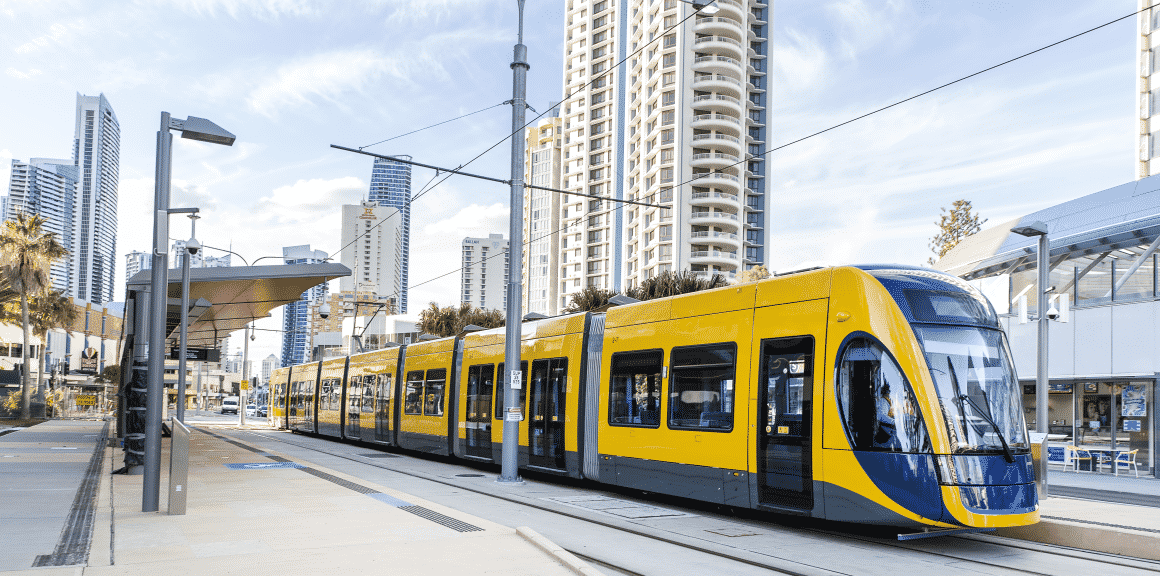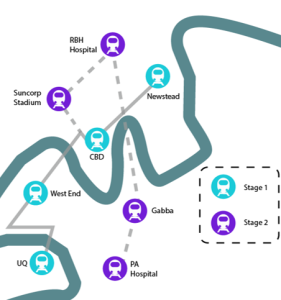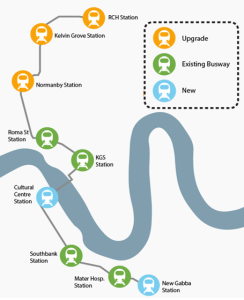As part of the 2016 Brisbane City Council election, a range of policies from both major parties have been proposed. High on this list are two competing large scale transport projects in the Brisbane CBD and surrounding areas, with congestion being a focal point of recent advertisements. The Liberal National Party (LNP), the incumbent Council, have proposed a “Brisbane Metro” system utilising existing Busways and new underground tunnels. The Labor Party have proposed a competing project which largely services the same need in the form of Light Rail. The specifics of each of these projects are still unclear, however, high-level information has become available through a variety of news outlets.
The 2016 Ballot Paper features seven candidates, led by Graham Quirk (LNP), Rod Harding (ALP) and Ben Pennings (Greens) amongst a range of independents and the Consumer Rights & No-Tolls Party. We understand you may have some questions about these projects. NineSquared is not taking a position on which project is better, the purpose of this paper is to put forward a summary of the facts currently available. There simply is not enough information available to make an informed economic or commercial case. Q1: What do these projects look like? Great question. We are not exactly sure yet. The LNP Brisbane Metro is expected to be along the South East Busway alignment, moving off into a new underground station and tunnel at the Cultural Centre, to the Victoria Bridge and through another new underground section under Adelaide Street, connect to King George Square Station and use the Inner Northern Busway for the remainder of the route. As a result, the Victoria Bridge will be converted to a public transit only ‘green’ bridge. A high-level estimate of the proposed route is presented below.
Q2: What’s the difference between a Metro and Light Rail
Brisbane Metro has been labelled ‘fancy rubber wheeled buses’ by the opposition. While this was meant as a derogatory statement, it is a rather close approximation of the proposed project. The proposed Brisbane Metro is a rubber-tyred metro, utilising technologies from both road and rail, with the rubber tires running along rolling pads. This technology allows for higher travel speeds, faster acceleration (and therefore allow for more frequent stations / stops) and short braking distances. However, energy consumption (and therefore operating costs) are relatively high and emissions may also be higher. Unlike many newer mini-metro services, it is expected to be manned with a driver, further increasing the operating costs compared to other services.
A range of rubber-tyred metros are in service across the world in a variety of forms. For example, select lines of the Paris Metro and Lyon Metro in France, Hiroshima Rapid Transit in Japan, Mexico City Metro in Mexico City and Light Rail Transit in Singapore amongst others. Light rail is an urban transport mode of travel similar to the trams operating in Melbourne, but with a higher capacity. The benefit of light rail over the Brisbane Metro is the comparatively low costs and improved reliability. This form of transport utilises a reserved right-of-way, but not necessarily grade-separations. The exact type of system has yet to be determined, specifically whether a lower capacity, higher capacity or mixed system will be in place. Much of this will be determined when alignment and stations are finalised as this will drive the speed and stop frequencies. It would be expected that this system would resemble that of Gold Coast Light Rail.
Q3: This all seems a bit familiar…
The Brisbane Metro resembles the Cross River Rail alternative proposed by the Newman government in 2011. This proposal was estimated to cost between $3 and $4 billion in capital expenditure, and replace the $8 billion associated with Cross River Rail. This would entail 40km of inner-city subway with “at least” 25 to 30 stations. While the Brisbane Metro is not of the same size and scope, the plans share similarities. Brisbane Metro also has some strong similarities with the Suburbs 2 City project, which had a prefeasibility study undertaken in 2013. And the Labor Light Rail promises a route essentially similar to the failed 1997 Briztram proposal.
Q4: These look expensive. Are they?
Pricing is still in the early stages, but in short, yes. The Liberal Brisbane Metro has been costed at $1.54 bn over 6 years, while the Labor Light Rail is slated for $1.2 bn. A breakdown of the Brisbane Metro Costing is as follows:
- Line, tunnel and station construction: $1.15bn
- Stabling and maintenance depot: $90m
- Land purchase costs: $120m
- 75 carriages for metro sets: $170m
- Business case and detailed design: $20m
The 9km Light Rail project is estimated to cost $1.2bn, with council paying $140 million. This includes $120 million on capital expenditure and $20 on the project’s business case. The overall cost was based on the cost per kilometre of Sydney’s light rail.
Q5: Where is all this money coming from?
Liberal has suggested that, without State or Federal funding, they would be able to fund the project via borrowings. However, higher rates have not been ruled out. Labor has suggested that their Light Rail project is a ‘Market-led proposal’, with private sector investment expected to be the primary funding source.
Q6: What does all of this spending get me?
A nice big new transport system! Oh, you meant in terms of actual benefits? Liberal’s Brisbane Metro is expected to accommodate 30,000 passengers per hour once 150 metro sets are available. This will remove 200 buses per hour during the morning peak, with 800 cars per day shifted to the William Jolley and Go-Between Bridges. This facilitates travel between Herston and the CBD of 5.5 minutes at a speed of 70km/h.
The specifics of Labor’s initiative have yet to be defined.
It is important to note, both of these projects assume Cross River Rail is completed.
Q7: OK, OK. Which one of these is better
There is not enough information yet. Until transport modelling is undertaken, costs are properly established and alignments are finalised it is difficult to draw too many conclusions. The Brisbane Metro would be “a first of its kind in Australia”. Does this mean Brisbane would be at the forefront of the market, or is it a bad idea purposely avoided by other jurisdictions? Will a Light Rail increase the mode shift for public transport, or simply move around the existing passenger base and incite additional transfers? Stay tuned to NineSquared’s LinkedIn and Twitter feeds for new information as it comes available.
Q8: Give me the facts again
The table below gives an overview of the key metrics available
| Liberal (Brisbane Metro) | Labor (Light Rail) | |
| Proposal | Brisbane Metro | Light rail |
| Cost | $1.54 billion | $1.2 billion |
| Hourly Capacity | 30,000 passengers / hour (in the peak, when additional sets are purchased) | Unknown (alignment and stations not finalised) |
| New or Upgrade Stations | Roma Street, King George Square, Cultural Centre, Southbank Station, Mater Hospital Station and the Gabba Station | University of Queensland (St Lucia), West End, CBD and Newstead in Stage 1. Further expansion possible to Suncorp Stadium, the Gabba and Coorparoo. |
| Funding Source | Borrowings (in the absence of Federal and / or State funding) | Market-led; private sector investment with around 10% government funding |
| Build Time | 6 years | Unknown (alignment and stations not finalised) |
| Travel Time Savings | Herston to CBD 5.5-minute trip (current 9 minutes scheduled) | Unknown (alignment and stations not finalised) |


